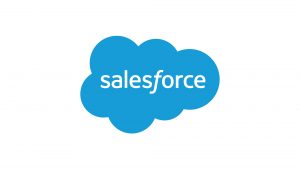By John L Pulley
Employee engagement is critical to the success of workers, teams and organizations. Engagement exists when employees buy into an organization’s mission and culture; when they feel they’re part of something bigger than themselves; when they’re personally invested in the success of the mission. You know it when you see it — and when you don’t.
“As employee engagement increases, agencies see increased productivity, increased work quality and increased retention of top talent,” said Michael Piccoli, Principal Solution Engineer for Salesforce. “Agencies that decrease their emphasis on employee engagement can expect to see decreases in those areas.”
Government legacy systems, some of which were developed decades ago, weren’t built to maximize employee engagement in the current environment. The inflexibility of those legacy systems makes it almost impossible to manage data and processes in a way that promotes frictionless employee experiences — the kind of positive interactions that strengthen employee engagement.
Legacy systems create numerous pain points for agencies:
- Critical HR processes are cumbersome and inefficient, slowed by manual inputs
- Unintegrated data from multiple sources obscures visibility and operational insights
- Fragmented, inflexible systems don’t support comprehensive management of employee lifecycles
All of these pain points lead to disengagement among workers, who can feel like cogs in a machine.
“At every level of government, employees feel disconnected from the organization because they can’t define their relationship to the organization or its processes,” said Michael Hauser, Global Defense Strategy Executive, Salesforce Global Public Sector.
Unsatisfactory experiences at the front end of the employee lifecycle can mar the quality of engagement for years to come. “Recruiting and onboarding continues to be one of the most important challenges facing agencies,” Hauser said. “These are make-or-break interactions.”
Solution: Transform Legacy Systems Into a Robust Tech Asset
As recruiting and retention of top-tier workers intensifies, agencies will seek competitive advantages. “There truly is a war for talent out there,” said Hauser. “To win it, agencies need a game-changer.”
As remote work expands and agencies have fewer opportunities to instill workplace culture by traditional means, the systems employees use will play a bigger role in determining employee engagement. These systems, if done well, will facilitate work while also promoting connected employee experiences that drive up loyalty, morale and retention. Poorly conceived systems will erode connections between workers and employers.
Any viable solution must include legacy systems that don’t support employee engagement. Those systems are inextricably entwined with agencies’ operations. They’re not going away. Agencies will consider modern, cloud-based solutions that integrate legacy applications and their collective data. A unified system — an engagement layer sitting on top of the legacy systems — is designed to deliver a range of benefits to agencies and workers:
- Integrated data across departments
- Streamlined processes to improve HR productivity and efficiency
- Worker interfaces and user experiences that support the entire employee lifecycle
- Unified views of candidates and employees that advance workforce strategies
- Recruiting and onboarding processes that help employees succeed
- Improved employee engagement, promoting retention and a stable workforce
- Greater mission success
Agencies will know they’re succeeding when employees’ user experiences more closely resemble what they’ve come to expect from private sector companies.
“The capabilities that the average person today enjoys in their nonworking life — going online and ordering from Amazon, doing their banking — can almost all be done remotely. In the federal government, employees are still standing in line waiting for things to process,” Hauser said.
This article is an excerpt from GovLoop’s report, “Drive Transformation Through a Connected Employee Experience.” Download the full report here.





Leave a Reply
You must be logged in to post a comment.